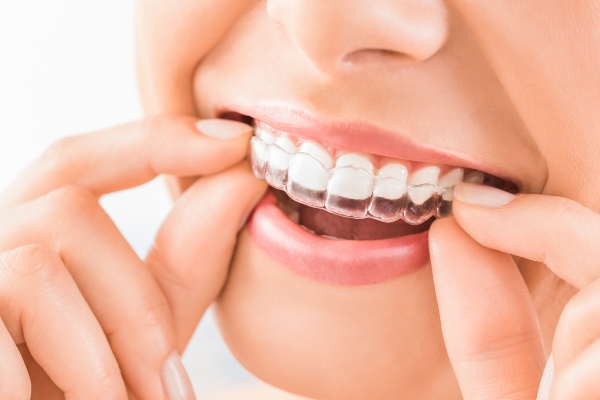3D Braces vs Traditional Braces

Are you hearing more about 3D braces? This is becoming a popular option for straightening teeth. Traditional metal braces are no longer the only treatment for fixing crooked teeth and bite abnormalities. When wondering which one is right, a dentist can help. You should also learn as much as you can about the benefits of each solution. You can then restore your smile and have the straight teeth that are desired.
Reasons to repair crooked teeth
It is not uncommon to see teens and adults who have misaligned teeth and bite problems. Straightening teeth can eliminate embarrassment and help a person overcome poor self-esteem and a negative self-image. Crooked teeth also present health challenges. Brushing and flossing are more difficult when teeth are not straight. These issues can cause jaw pain, headaches, and difficulty in chewing. Teeth can become more prone to wearing down and breaking too.
How the braces are made and what they look like
Traditional braces have long been a common way to straighten teeth. These consist of wires, elastic, and metal brackets. The braces put pressure on the teeth, correcting angles and gradually forcing them to move into the right locations. To determine how to fit the patient with braces, the dentist will take X-rays and make impressions of the mouth.
On the other hand, 3D braces are made from digital images, which go to a 3D printer. The printer makes clear plastic aligners. These slip over the jaws and fit snugly over the teeth. The aligners work similarly as braces, moving teeth into the correct positions over time. The patient will get a new set of aligners every few weeks.
Comfort level
Another significant difference between 3D braces and traditional braces is how they feel. Metal braces can be uncomfortable and take some time to get used to. The wires and brackets can rub against the cheeks and gums, causing sores and cuts. The aligners do not pose these same challenges and are much more comfortable to wear.
Permanent vs. removable
Traditional braces are cemented in place. Only the dentist can take them off and will do so at the end of the treatment period. The braces make it difficult to brush and floss effectively, as food can get stuck in between the wires and brackets. 3D braces are removable and can be out of the mouth for a couple of hours a day. The patient should remove them while eating and to clean them.
The process
With traditional braces, the dentist will make adjustments every few weeks. However, the brackets will stay on the teeth throughout the treatment period. As for 3D braces, the patient will get a new set at each visit to the dentist’s office. As the teeth move, the aligners will change to fit in the mouth correctly.
3D braces make sense to fix crooked teeth
If you are tired of having a crooked smile, treatments are available. 3D braces are more comfortable, convenient, and do not stand out like metal braces. If you are interested in this method, talk to a dentist.
Are you considering 3D braces in the Reston area? Get more information at https://www.orthodonticprecision.com.
Check out what others are saying about our services on Yelp: 3D Braces in Reston, VA.
Recent Posts
You may be interested in using Invisalign® to correct only your top or lower teeth. Continue reading to learn more about how Invisalign treatment is used. While Invisalign may be used to straighten either the lower or upper teeth, most situations require correcting the two arches. The purpose is to ensure patients have a well-aligned…
Invisalign® is a breakthrough orthodontic technology that uses a series of transparent aligners to enhance the look of crooked, overlapping, and gapped teeth. If you are considering using Invisalign for your orthodontic treatment, you may be curious about how often you would have to go for checkups and what happens during those appointments. Continue reading…
Are you considering Invisalign® treatment? Read on to learn more about this teeth-straightening treatment. If you have misaligned teeth, you can choose Invisalign to straighten your teeth. Many individuals hide their smiles because their teeth are not perfectly straight. There is no need to shy away from smiling with these teeth-straightening treatments, even in social…
Invisalign® is a popular procedure that uses transparent aligners to correct misalignments. Their design makes them a lot more comfortable than conventional braces. Since Invisalign aligners are removable, you can eat all of your favorite meals and participate in all of your favorite activities without worrying about having to go to the orthodontist for damaged…


